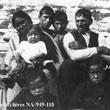Canadian Charter of Rights and Freedoms

The Canadian Charter of Rights and Freedoms came into effect on April 17, 1982. It occupies the first sections of the Constitution Act 1982, and as such, it entrenches in the Constitution the rights and freedoms of all Canadian citizens. While Canada had laws governing the basic freedoms of its citizens prior to 1982, none were cemented into the Constitution the way the Charter is.
The first attempt to set out rights at a federal level was the Canadian Bill of Rights, passed in 1960 by the government of John Diefenbaker. It included many of the rights featured in the Charter; however, because it was a bill and not part of the Constitution, it was easily amendable. Moreover, it was limited in its power. It applied only to the federal government and not to the provinces and it did not require the amendment of existing, contradictory laws. As such, the law was seen by many as a good effort but largely ineffective. Its ineffectiveness prompted calls for more substantive legislation to be enacted.
The Canadian Charter of Rights and Freedoms was partly a response to such calls and was largely the result of then-Prime Minister Pierre Elliott Trudeau’s efforts.

The Canadian Charter of Rights and Freedoms lays out how Canadians are allowed to interact with one another and with the government and how governments must interact with one other. Many consider the Charter to be the most important Canadian law because it gives power to the courts to overrule any law which contradicts it. It is thirty-four sections long and lays out the fundamental rights and freedoms of all Canadians. Fundamental freedoms make up Section 2, and they are:
- freedom of conscience and religion;
- freedom of thought, belief, opinion, and expression, including freedom of the press and other media of communication;
- freedom of peaceful assembly; and
- freedom of association.
Rights are detailed in Sections 3 to 23 and include:
- democratic rights (include the right to vote and state that parliaments and legislatures may serve for no longer than five years);
- mobility rights (include the right to enter and leave Canada and to live in any province);
- legal rights (include the right not to be arbitrarily arrested or subjected to cruel or unusual treatment);
- equality rights (include the statement that every citizen is equal in the eyes of the law and that discrimination cannot be based on race, national or ethnic origin, colour, religion, sex, age, or mental or physical disability);
- language rights (establish English and French as the official languages of Canada, including the right to correspond with the federal government in either language and the use of either language in Parliament); and
- minority language rights (include the rights of minority English and French populations to be educated in their native language).
The Charter also includes an enforcement mechanism whereby those who feel their rights or freedoms have been violated or denied can apply to the courts to rectify the situation. In addition to the enforcement mechanism, the Charter also laid out how it would be applied. This includes sections stating that:
- Aboriginal rights would not be affected;
- existing rights and freedoms would not be overruled;
- the Charter should be applied in such a way to preserve and enhance Canada's multicultural heritage;
- the Charter applies equally to both females and males; and
- the Charter applies to both provinces and territories.

The Charter is one of the most important documents in Canadian history. In the years since it was passed, it has been used to overturn or amend over 300 laws deemed in violation of the Charter. The Charter is now cited as the basis for Supreme Court of Canada decisions. Because the Charter had clarified and solidified the meaning and definition of rights and freedoms, it was easier for courts to interpret them. Also, by placing the Charter in the Constitution, its statements could not be overridden by other laws.
The Charter has been used by the Supreme Court on several occasions to enhance and promote human rights and diversity. One example is case of Vriend v. Alberta [1998] in which the Supreme Court ruled that gays and lesbians could not be discriminated against; in this case, they could be left out of provincial human rights legislation. Another example is the case of R. v Keegstra [1990]. In this case the court upheld the decision to charge an Alberta teacher, James Keegstra, with hate crimes after he taught his students that the Holocaust did not happen. The court ruled that this was an acceptable infringement on his freedom of speech.




